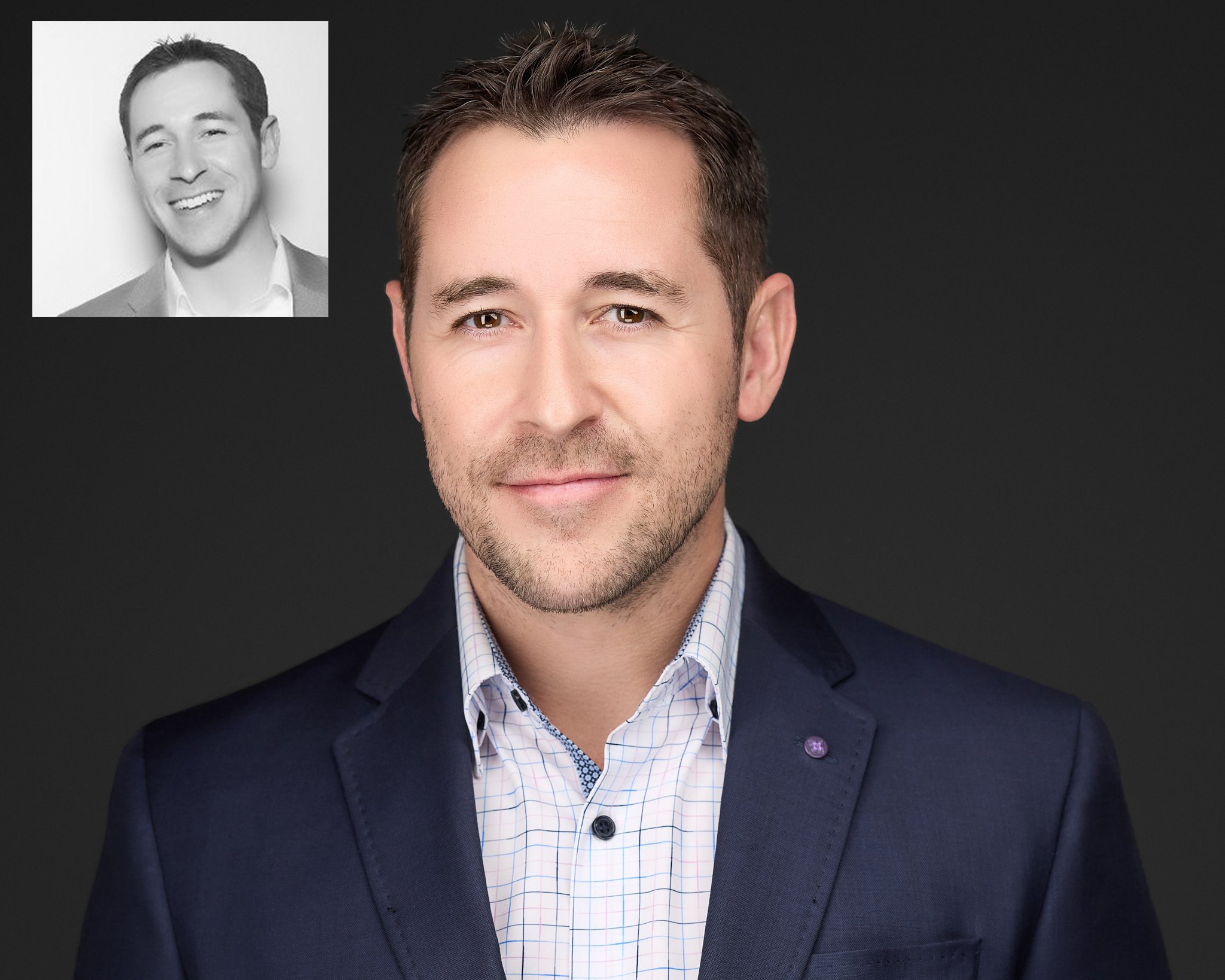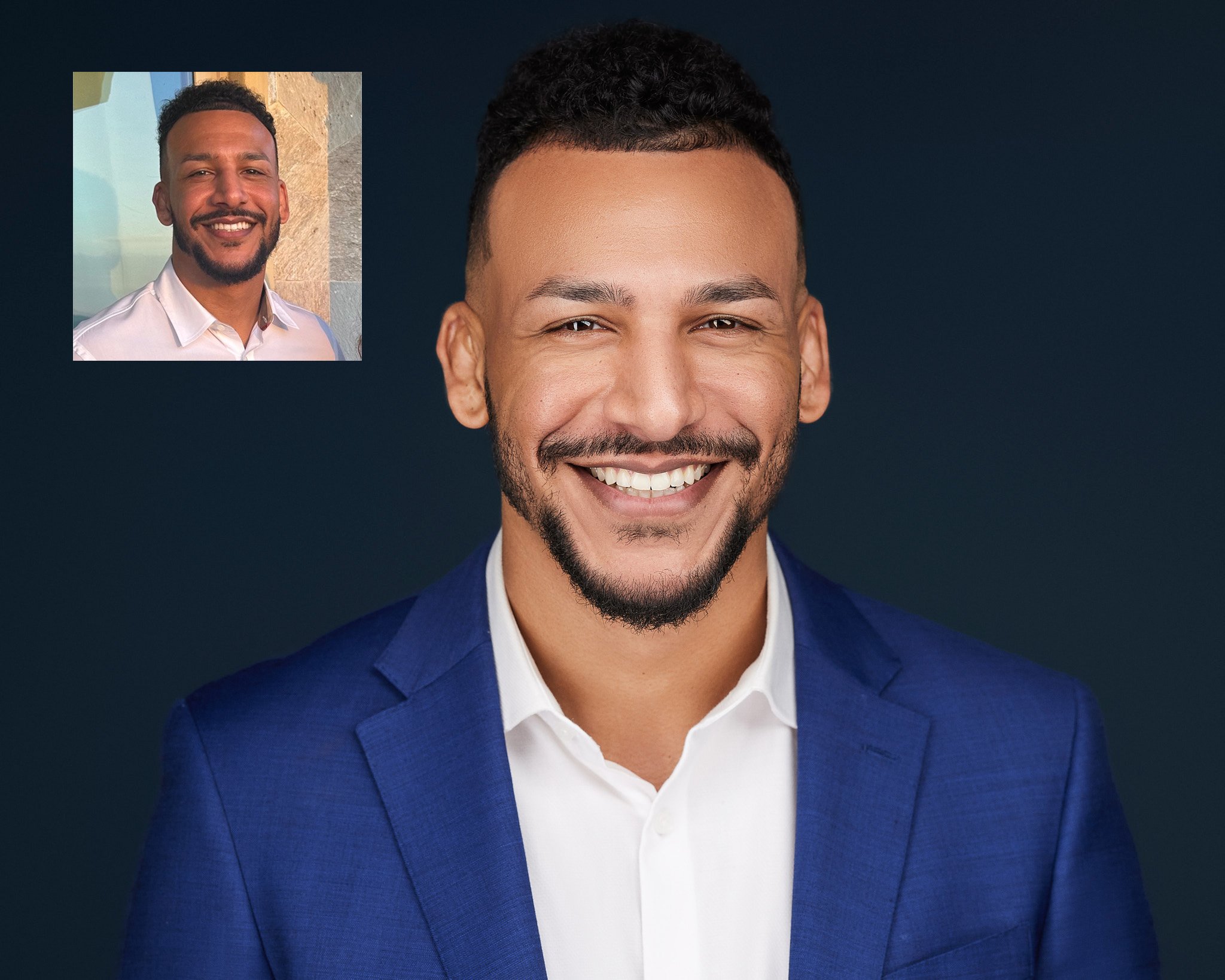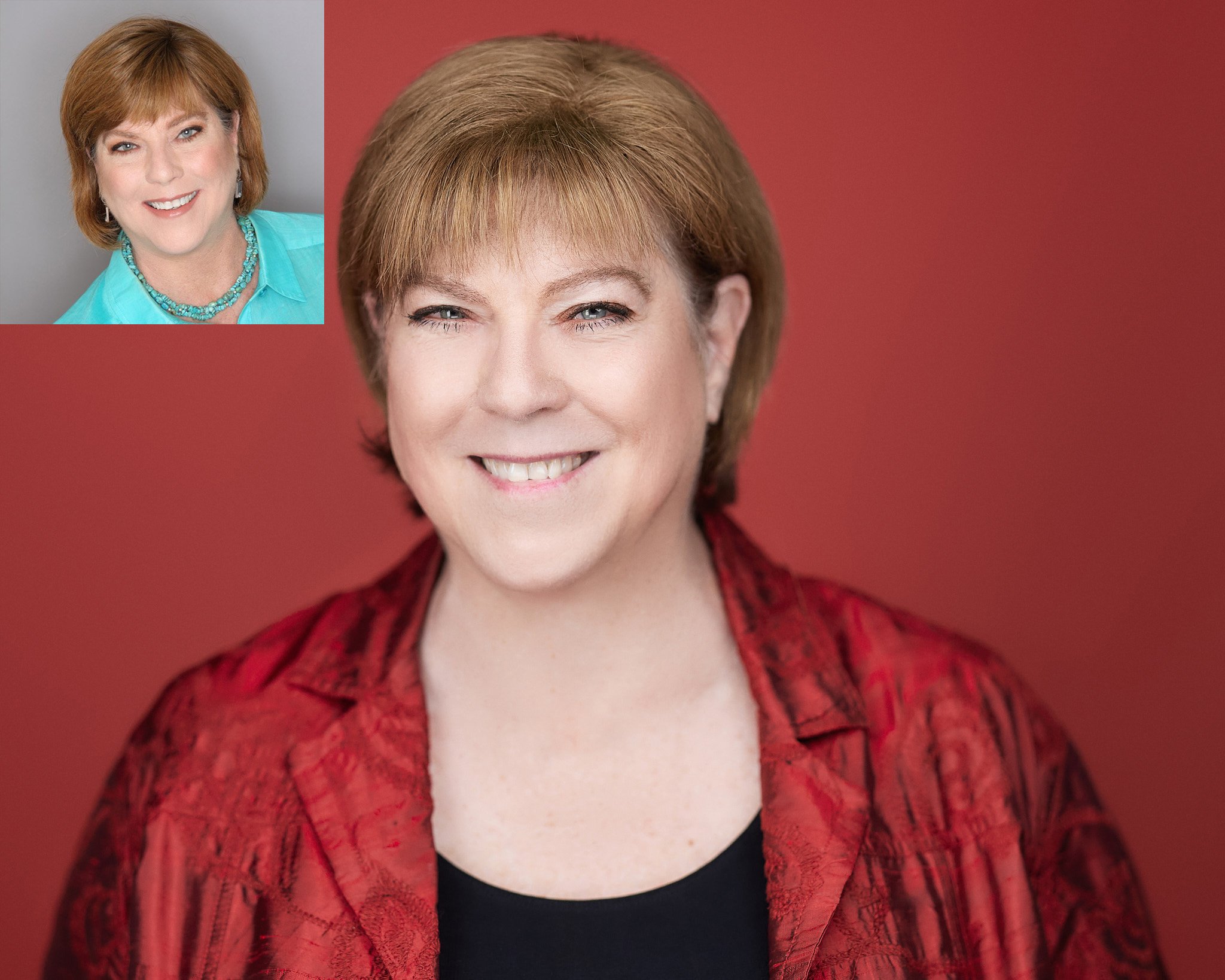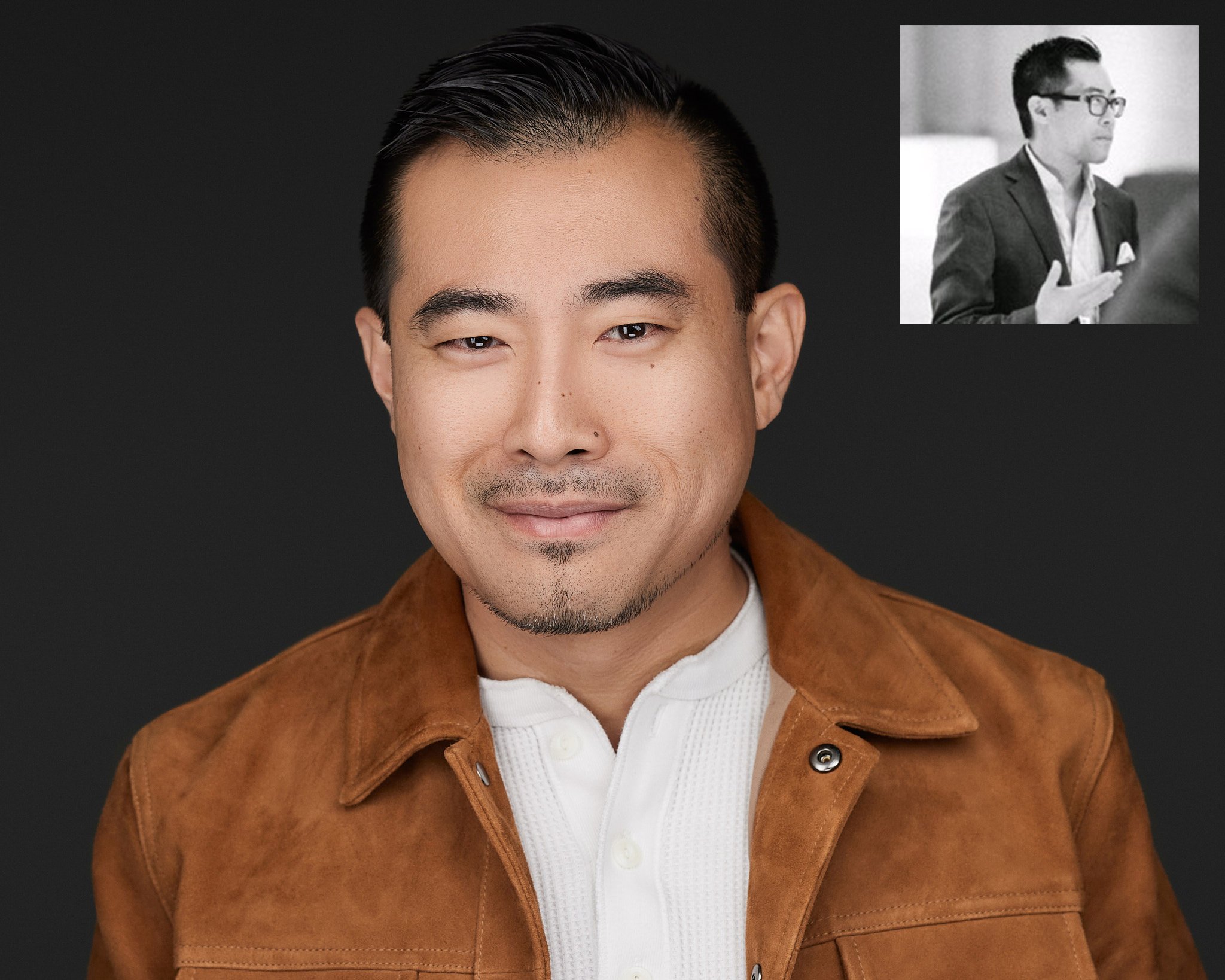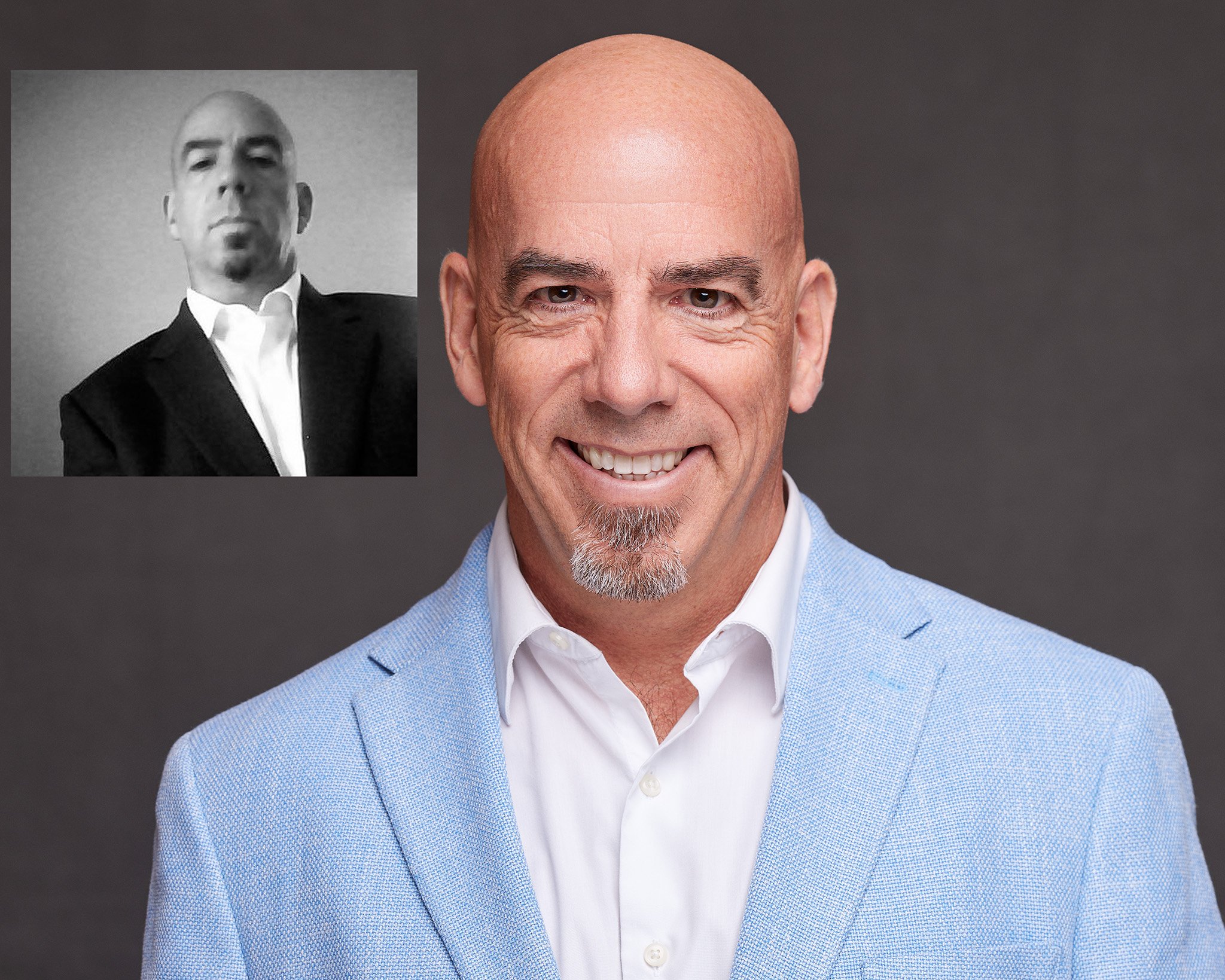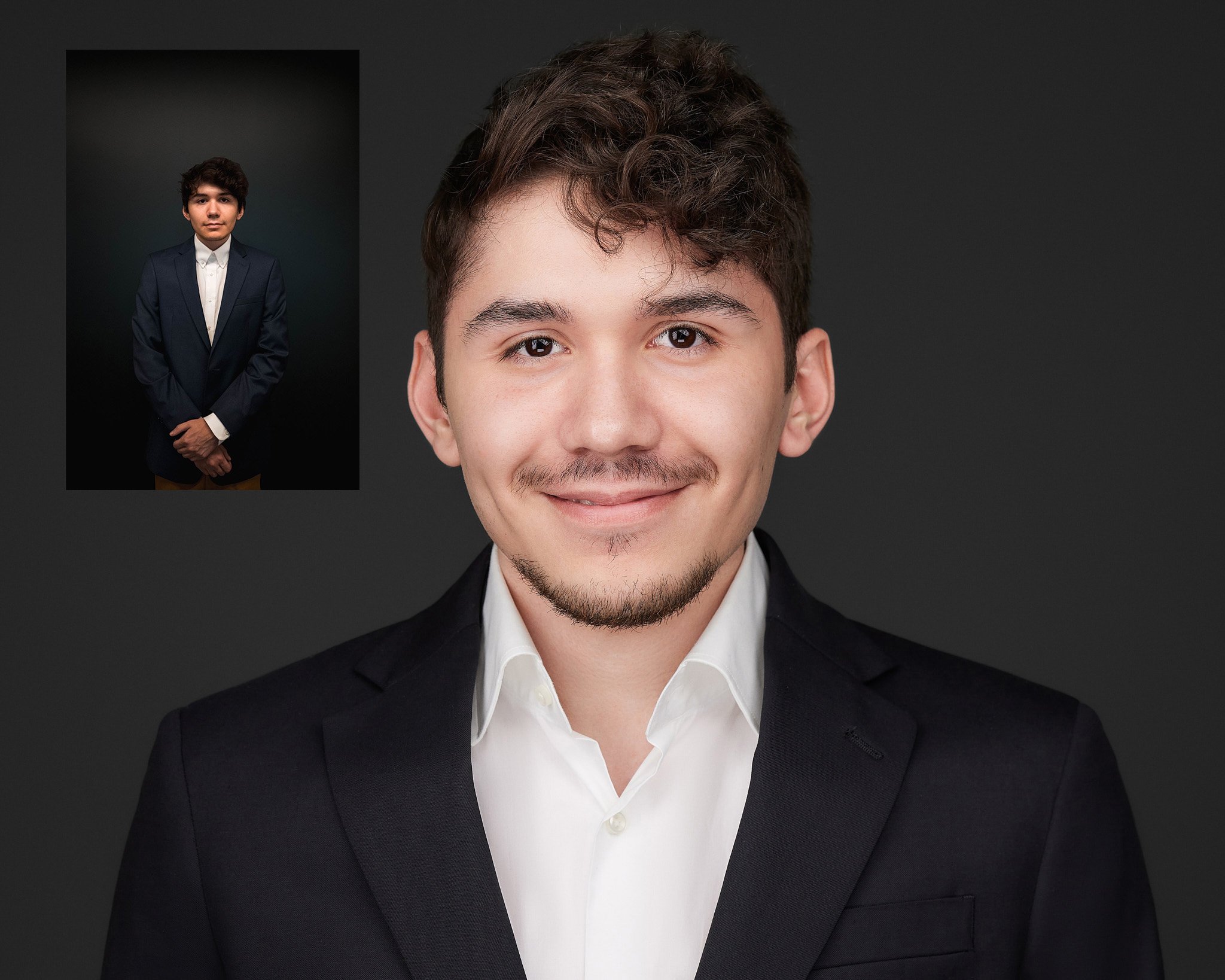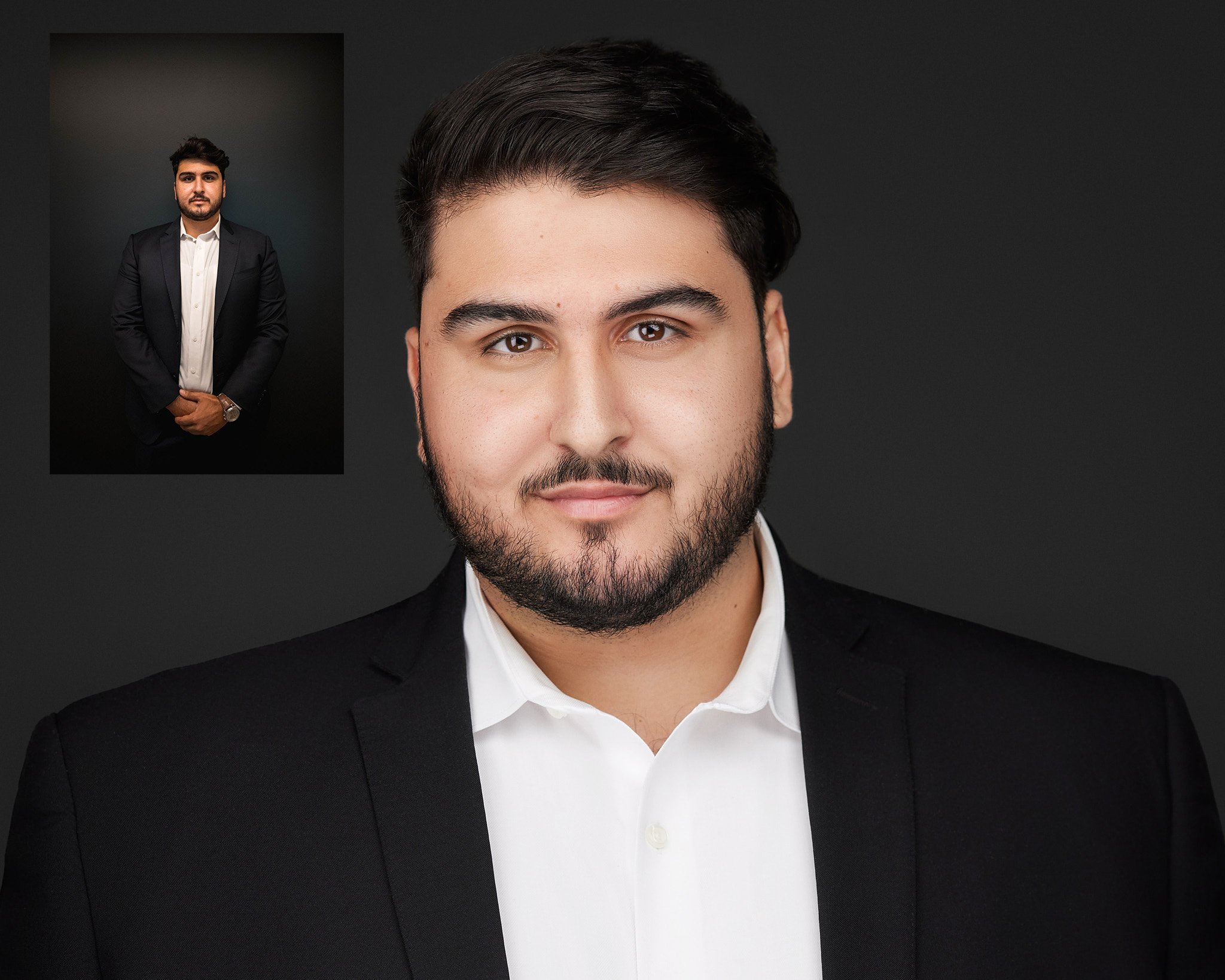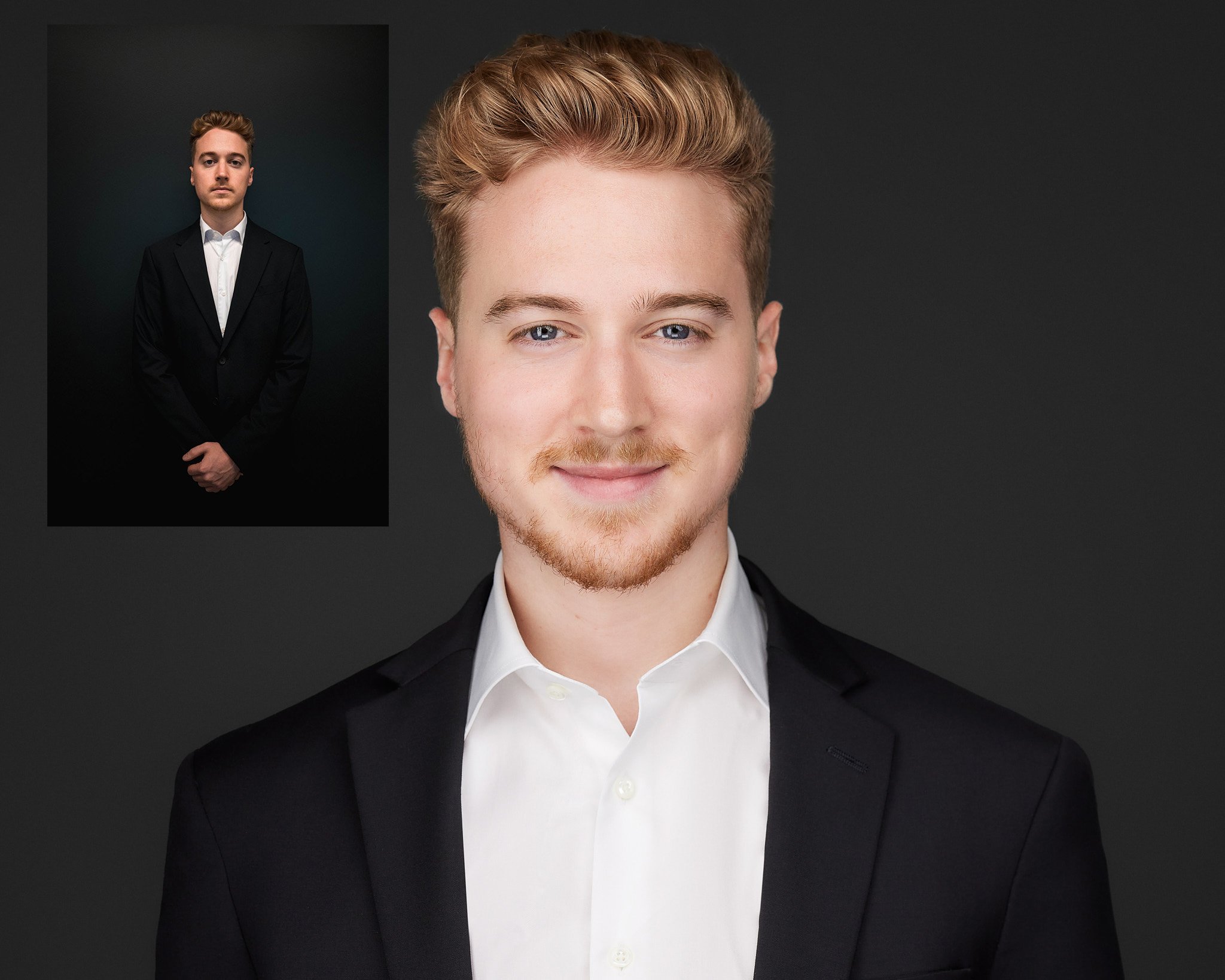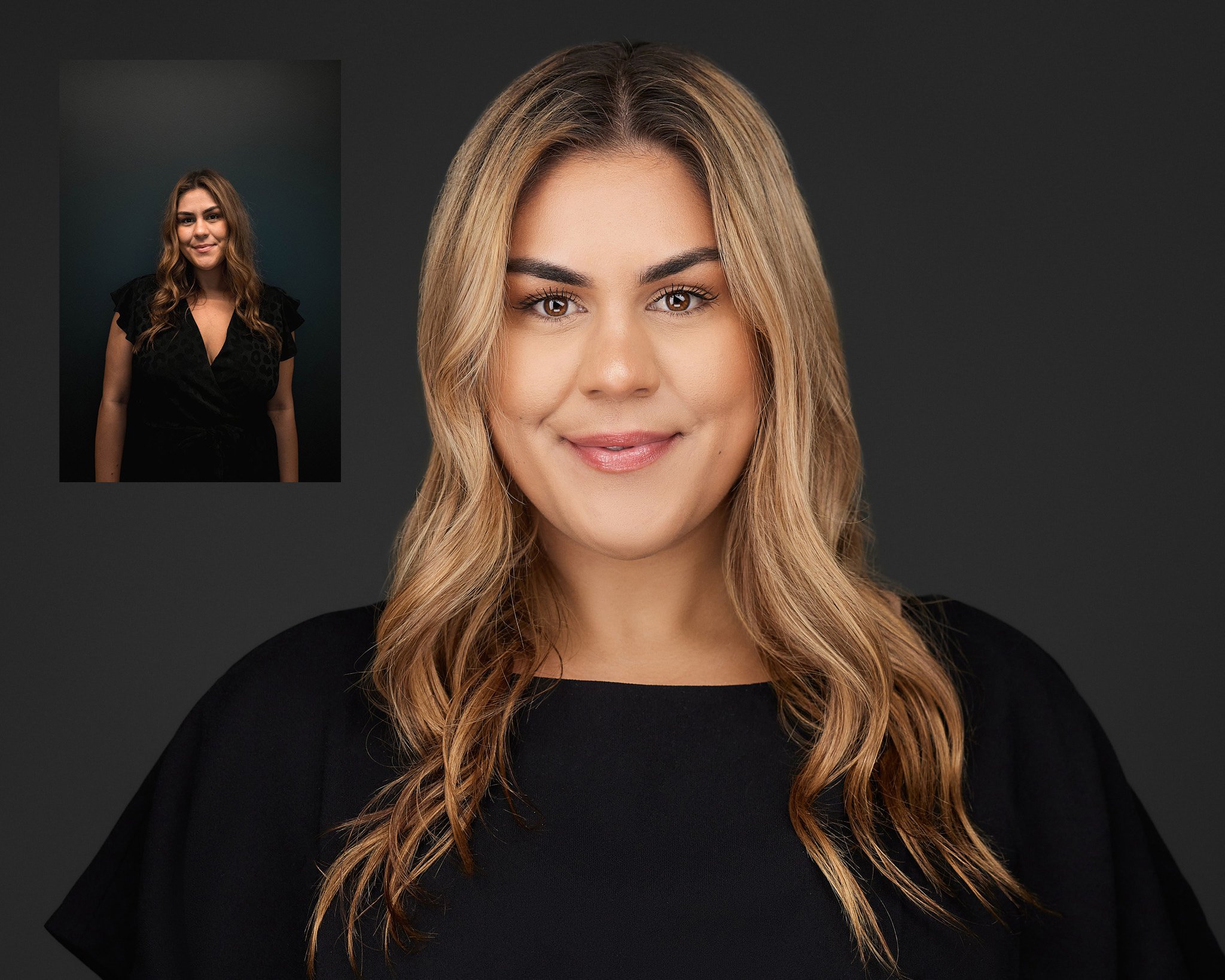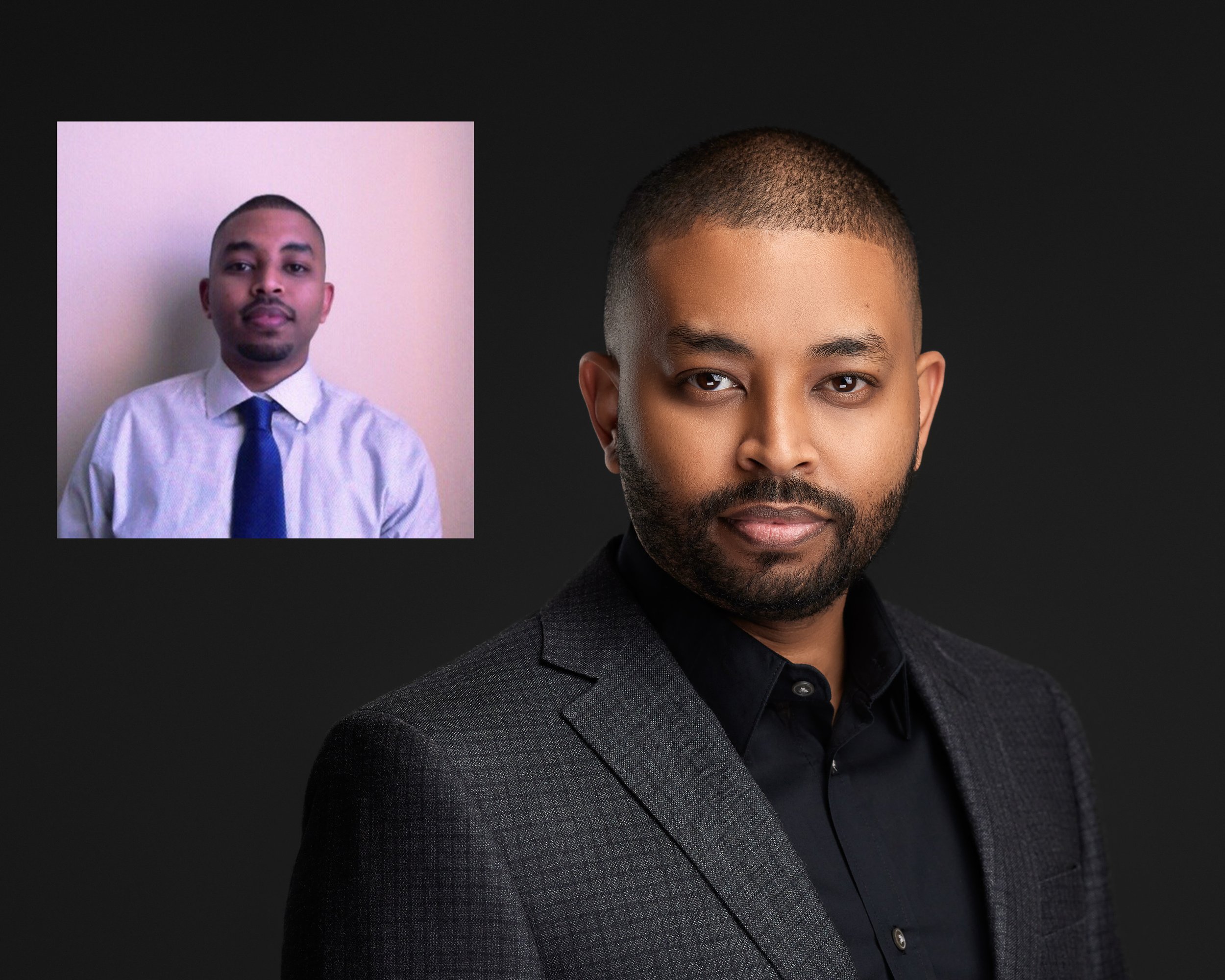What Makes a Bad Headshot? A Deep Dive into Common Mistakes
Navigating the world of professional headshots can be a challenge. A compelling headshot can set you apart from the crowd. Every business professional who’s serious about their job should have an excellent professional headshot, whether you are an actor, work in corporate, a real estate agent, a lawyer, a Doctor, or someone looking to update their LinkedIn profile. On the other hand, a poorly executed headshot can do the opposite, leaving an undesirable first impression. So, what differentiates a lousy headshot from a good one? Let's unpack this.
1. Poor Lighting:
The foundation of any great photo is lighting. If your face is veiled in shadows, overexposed, or underlit, it can mask your features and give off an unprofessional vibe. A professional headshot photographer will have the best quality studio lighting.
There are instances where professionals want their headshots taken outdoors, which is fine, but the appropriate lighting should be brought on location to mix it with natural lighting. A professional headshot photographer will know how to use natural lighting to mimic it.
Bad headshots often suffer from harsh shadows or washed-out appearances due to poor lighting choices. There is no hope in rescuing a headshot that has crappy lighting.
2. Distracting Backgrounds:
Remember, the focus of a headshot is all about the individual’s face. A background should complement, not distract, the photo. An overly busy or brightly colored background can divert attention from the subject. This doesn't mean the background should be bland. On the contrary, it can have texture and depth, but it should never overshadow the main focus.
The background should still be slightly out of focus if the headshot is taken outdoors or in a different environment than a photo studio. The image should have a feel of the environment without it being overly distracting.
3. Forced Expressions:
An unnatural expression is one of the most noticeable features of a poorly executed headshot. Whether it's a forced smile, a deer-in-the-headlights look, or an overly dramatic pose, inauthentic expressions can make viewers question your credibility.
Instead, the photographer should work with the individual to aim for genuine, relaxed expressions that showcase the personality. We always say that a headshot is very much focused on the eyes. If you have a fake smile, it can easily be spotted just by looking at the eyes.
A good professional photographer will have tricks up their sleeves to engage with the subject, make them feel more comfortable, and bring out their natural expressions.
4. Over-Editing and Retouching:
In the age of filters and Photoshop, wanting to 'perfect' your image is tempting, but remember, the goal is authenticity. A touch-up here and there is fair but overly smooth skin, unnaturally bright eyes or teeth, or distorted features that will make you look artificial.
When we edit headshots, we focus on keeping the texture of the skin natural but still removing small imperfections like blemishes and pimples.
We describe our editing as helping the subject look the best version of themselves while keeping the overall look authentic and natural.
5. Inappropriate Attire:
Your clothing should reflect the context in which you'll use the headshot. An actor might have more freedom with creative styling, while a corporate professional should lean toward business or casual business attire.
Wearing casual clothing for a formal setting or vice versa can send mixed messages about your professionalism. Your look should align with your brand or industry standards. Make sure your headshot sends the right message about who you are and what you represent. Here are some professional headshot trends to look for this year.
Some concepts when styling clothing that apply to all individuals across different professions are:
Avoid big patterns or logos. This can be very distracting and also can add a few pounds in your headshots.
Choose clothes that are fitted or tailored to your body type.
Avoid any bulky accessories like scarves or big jewelry items. This can add additional weight to your photo and, most of the time, adds unnecessary distractions.
Choose clothes that make you feel good. When you feel comfortable, it shows in the photograph.
6. Bad Framing and Posing:
The rule of thirds, eye lines, and proper cropping are not just fancy terms; they're the backbone of a well-composed shot. If your face is dead center, too small, or awkwardly cut off, it can disturb the balance of the photo. A good headshot typically focuses on the face, cropping somewhere around the upper chest or shoulders.
When it comes to posing in front of the camera, we’ve mastered it down to these important details to make sure everyone looks good:
Put your weight on one leg (whichever one feels more natural).
Have good posture - standing tall like someone is pulling you by the top of your head with a string.
Slam your forehead forward and always bring that chin down. It feels unnatural, but it will make sense once you see the headshot. It gives a good jaw definition and helps eliminate any extra chins.
Remember to “smize”; this ensures you have an engaging, interesting look in your eyes.
7. Low Resolution:
In a world where most things are viewed digitally, the resolution of your headshot matters. A pixelated or blurry image can immediately come off as unprofessional. Always ensure your photo is of the highest quality for print and digital use.
Work with your headshot photographer to make sure the digital photos are delivered in the sizes that you plan to use them in.
8. Not Hiring a Professional:
While smartphones have come a long way, there's a clear difference between selfies and professionally done photos. Professionals understand the complexities of lighting, composition, and post-processing. Investing in a quality headshot is investing in your personal brand. Here are 5 key tips on how to choose a professional headshot photographer.
A headshot is more than just a picture, it represents what you and your brand stand for. Avoiding these common mistakes can differentiate between being overlooked and making a memorable first impression. It’s important to always approach your headshot with the same level of sincerity and preparation you would for any other professional endeavor. After all, you only get one chance to make a first impression – make sure it's the right one!
To prove our point on the importance of a good corporate headshot, here are some before and afters of our clients headshots we’ve taken.



